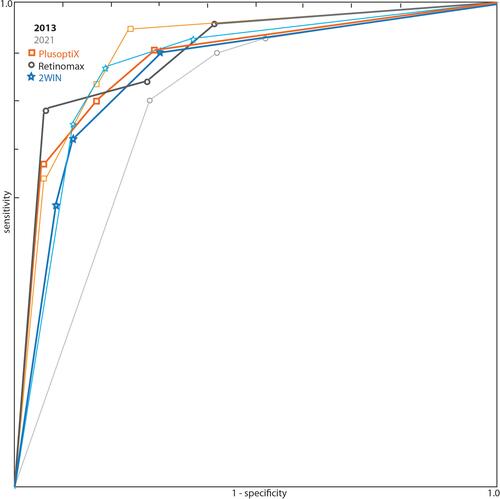Figures & data

Figure 1 Compared oval solid prior ABCD effort with this ABCD composite ellipsoid used to grade spectacle comparison. The horizontal dimension is composed of J0 on x-axis and J45 on y-axis, while spherical equivalent is on the z-axis with over plus extending up and age-based over-minus tolerance extending down depending on expected accommodation.
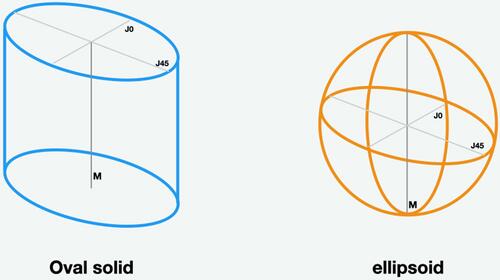
Figure 2 Limits of spectacle refraction sphere and cylinder spectacle components that indicate the low or high level optical need relative to resolving blur.

Table 1 Spectacle Comparison
Figure 3 Bland–Altman and ABCD composite grade for three handheld autorefractors comparing spectacle components spherical equivalent, J0 and J45 cylinder vector transformations for all 202 pediatric patients with high and low spectacle needs.
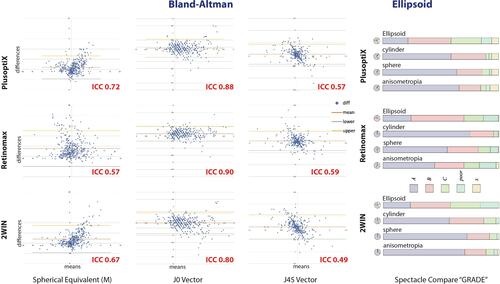
Figure 4 Bland–Altman and ABCD composite comparison for the three handheld remote autorefractors for the n=113 eyes from pediatric patients with higher level 2 and level 3 spectacle needs.
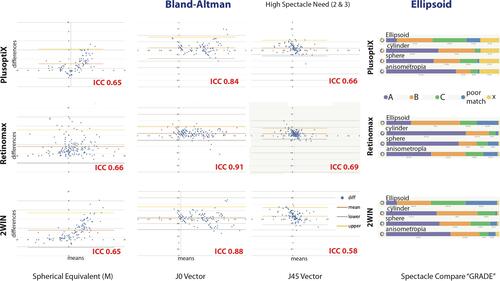
Figure 5 A comparison of correlations comparing three ABCD composite components (spherical equivalent, composite J0×J45 cylinder and ellipsoid) for the Plusoptix, 2WIN and Retinomax handheld autorefractors.
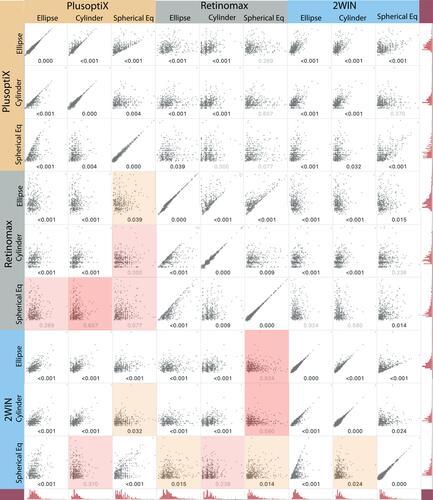
Table 2 Validation Statistic for Amblyopia Screening
Figure 6 Receiver operating characteristic (ROC) curve comparing portable autorefractors Plusoptix S12 (orange squares), Adaptica 2WIN (blue stars) and Retinomax (gray circles) for 202 pediatric patients with high 43% prevalence refractive amblyopia risk factors. The older triad of the 2013 AAPOS uniform guideline is shown in bold compared to the proposed 2021 AAPOS Uniform Guidelines for patients older than four years shown in delicate lines.
